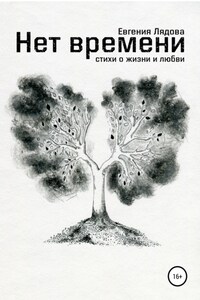The knowledge of the origin of cultivated plants is interesting to agriculturists, to botanists, and even to historians and philosophers concerned with the dawnings of civilization.
I went into this question of origin in a chapter in my work on geographical botany; but the book has become scarce, and, moreover, since 1855 important facts have been discovered by travellers, botanists, and archæologists. Instead of publishing a second edition, I have drawn up an entirely new and more extended work, which treats of the origin of almost double the number of species belonging to the tropics and the temperate zones. It includes almost all plants which are cultivated, either on a large scale for economic purposes, or in orchards and kitchen gardens.
I have always aimed at discovering the condition and the habitat of each species before it was cultivated. It was needful to this end to distinguish from among innumerable varieties that which should be regarded as the most ancient, and to find out from what quarter of the globe it came. The problem is more difficult than it appears at first sight. In the last century and up to the middle of the present authors made little account of it, and the most able have contributed to the propagation of erroneous ideas. I believe that three out of four of Linnæus’ indications of the original home of cultivated plants are incomplete or incorrect. His statements have since been repeated, and in spite of what modern writers have proved touching several species, they are still repeated in periodicals and popular works. It is time that mistakes, which date in some cases from the Greeks and Romans, should be corrected. The actual condition of science allows of such correction, provided we rely upon evidence of varied character, of which some portion is quite recent, and even unpublished; and this evidence should be sifted as we sift evidence in historical research. It is one of the rare cases in which a science founded on observation should make use of testimonial proof. It will be seen that this method leads to satisfactory results, since I have been able to determine the origin of almost all the species, sometimes with absolute certainty, and sometimes with a high degree of probability.
I have also endeavoured to establish the number of centuries or thousands of years during which each species has been in cultivation, and how its culture spread in different directions at successive epochs.
A few plants cultivated for more than two thousand years, and even some others, are not now known in a spontaneous, that is, wild condition, or at any rate this condition is not proved. Questions of this nature are subtle. They, like the distinction of species, require much research in books and in herbaria. I have even been obliged to appeal to the courtesy of travellers or botanists in all parts of the world to obtain recent information. I shall mention these in each case with the expression of my grateful thanks.
In spite of these records, and of all my researches, there still remain several species which are unknown wild. In the cases where these come from regions not completely explored by botanists, or where they belong to genera as yet insufficiently studied, there is hope that the wild plant may be one day discovered. But this hope is fallacious in the case of well-known species and countries. We are here led to form one of two hypotheses; either these plants have since history began so changed in form in their wild as well as in their cultivated condition that they are no longer recognized as belonging to the same species, or they are extinct species. The lentil, the chick-pea, probably no longer exist in nature; and other species, as wheat, maize, the broad bean, carthamine, very rarely found wild, appear to be in course of extinction. The number of cultivated plants with which I am here concerned being two hundred and forty-nine, the three, four, or five species, extinct or nearly extinct, is a large proportion, representing a thousand species, out of the whole number of phanerogams. This destruction of forms must have taken place during the short period of a few hundred centuries, on continents where they might have spread, and under circumstances which are commonly considered unvarying. This shows how the history of cultivated plants is allied to the most important problems of the general history of organized beings.
CHAPTER I.
IN WHAT MANNER AND AT WHAT EPOCHS CULTIVATION BEGAN IN DIFFERENT COUNTRIES
The traditions of ancient peoples, embellished by poets, have commonly attributed the first steps in agriculture and the introduction of useful plants, to some divinity, or at least to some great emperor or Inca. Reflection shows that this is hardly probable, and observation of the attempts at agriculture among the savage tribes of our own day proves that the facts are quite otherwise.
In the progress of civilization the beginnings are usually feeble, obscure, and limited. There are reasons why this should be the case with the first attempts at agriculture or horticulture. Between the custom of gathering wild fruits, grain, and roots, and that of the regular cultivation of the plants which produce them, there are several steps. A family may scatter seeds around its dwelling, and provide itself the next year with the same product in the forest. Certain fruit trees may exist near a dwelling without our knowing whether they were planted, or whether the hut was built beside them in order to profit by them. War and the chase often interrupt attempts at cultivation. Rivalry and mistrust cause the imitation of one tribe by another to make but slow progress. If some great personage command the cultivation of a plant, and institute some ceremonial to show its utility, it is probably because obscure and unknown men have previously spoken of it, and that successful experiments have been already made. A longer or shorter succession of local and short-lived experiments must have occurred before such a display, which is calculated to impress an already numerous public. It is easy to understand that there must have been determining causes to excite these attempts, to renew them, to make them successful.








